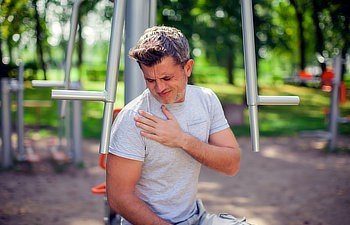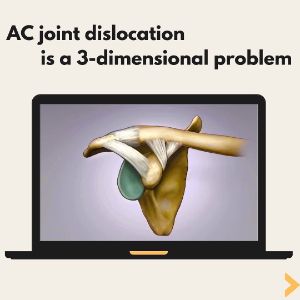The human body is a marvel of intricate muscles and tendons, each playing a crucial role in our daily movements. One such powerhouse is the pectoralis muscle, located in the front of the chest, comprised of the major and minor pectoralis.
However, this robust muscle is not exempt from injuries, and one particularly severe condition is the pectoralis major muscle rupture, commonly known as a “pec rupture.” This injury, though rare, can be debilitating, as evidenced by the recent case of UFC fighter Jon Jones, who suffered a severe pectoral tendon tear, putting him out of action. The athlete has a long road to recovery.
Understanding Pectoralis Major Muscle Rupture
The pectoralis major muscle, responsible for moving the shoulders forward and across the chest, can experience partial or complete tears of its tendon, especially in men aged 20 to 50. Such ruptures are often a result of forceful activities like weightlifting, particularly during a bench press exercise.
Additionally, sports such as football, wrestling, rugby, and other traumatic accidents may contribute to this injury, with a higher likelihood in patients using steroid medication.
When a pectoralis muscle rupture occurs, individuals experience sudden, severe pain and a tearing sensation in the chest. Other symptoms include pain in the upper arm, weakness, bruising, and the formation of a dimple or pocket above the armpit.
Treatment and Recovery
In a pectoralis muscle rupture, immediate measures involve applying ice and immobilizing the shoulder, arm, and chest. However, surgery is often necessary for complete tears of the pectoralis muscle tendon. It is crucial to note that surgery is typically not recommended for partial tears, tears within the muscle, or for elderly and low-demand patients.
During the surgical repair, large sutures are carefully placed in the torn tendon and secured to the arm bone using either holes in the bone or anchors. This early intervention minimizes muscle atrophy and scarring, offering patients a better chance of returning to high-level sports and activities.
Prevention and Proper Technique
Preventing pectoralis muscle ruptures begins with adopting the proper bench press technique. Limiting the distance to which the bar is lowered and narrowing the grip of the hands on the bar are crucial steps in minimizing the risk of injury.
Consultation with Dr. Steven Struhl
For individuals seeking expert advice and personalized care for pectoralis muscle ruptures or related concerns, scheduling a consultation with Dr. Steven Struhl is wise. Dr. Struhl, based in New York, specializes in addressing orthopedic issues and is experienced in guiding patients through the recovery process.
If you or someone you know is dealing with a pectoralis muscle injury, don’t hesitate to contact Dr. Struhl’s practice. Understanding the causes, symptoms, and treatments for pectoralis muscle ruptures is the first step toward recovery and a return to an active lifestyle.
Call Dr. Struhl today if you would like to book a consultation at his New York offices.
Posted on behalf of Steven Struhl MD





